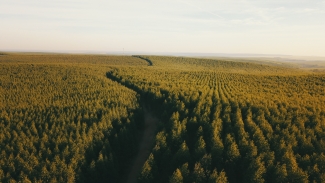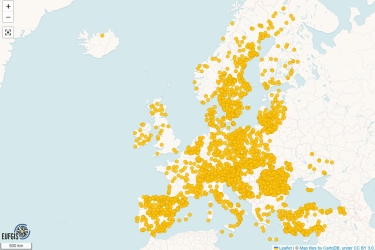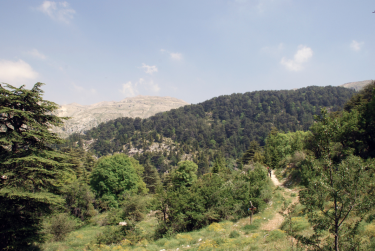Exploring planted forests at the XXV IUFRO World congress 2019

While Brazil has 488 Million hectares of natural forests, planted forests also have their place: eucalyptus and pine are the main species in plantations, and others include rubber trees, acacia and teak. It is against this backdrop that different aspects of planted forests were explored in a number of sessions and visits during the IUFRO World Congress 2019.
As well as the C9B session, ‘Planted Forests for a Greener Future and achieving Sustainable Development Goals (SDGs)’, chaired by EFIPLANT’s Christophe Orazio (see article about EFIPLANT at the IUFRO World Congress 2019), other sessions gave valuable input on planted forests to the event.
Various aspects of the practice of restoring native or mixed forests within plantation stands and landscapes were explored in the session D1d, ‘Employing plantations to restore native forests using successional forest management systems’. The results of studies addressing silvicultural practices and the possibilities for large scale application of current results and future research needs were discussed.
Meanwhile, sessions C1u and C1d ‘Mixed-species forests and plantations: Knowledge gaps and research priorities’ presented studies that highlight the most important knowledge gaps and recent research for natural and planted mixed-species forests in tropical and temperate regions.
Other sessions explored the management of eucalyptus plantations (C1w, C2p, C2r), and there were a couple of sessions related to adaptation and genetics, such as the B2a (Subplenary), ‘Trees on the move: range shifts, potential for genetic adaptation and assisted migration’, and B1e, ‘Trees on the move: seed sourcing, germination, genetic adaptation and assisted migration in a changing climate’. Regarding intensification, B2c gave insights into novel advances in genomics and tree breeding for sustainable forests.
There were also some other general sessions addressing precision forestry (C3e), the management of fast growing, industrial plantation forests in a variety of geographic locations and settings in a sustainable way (E4b), and the development of biological control programs in planted forests. (C7p, C7q, C7r).
Planted forests in Brazil
The main planted tree species are eucalyptus and pine, covering 7.4 million and 2 million hectares respectively The other species are mainly rubber trees, acacia and teak. The araucaria plantation has been stopped due to legislation preventing harvesting of native trees species.
The plantations follow the national regulation for wildlife protection which imposes permanent protection areas with buffer zones of 30m for small streams to 500m for streams larger than 600m.
In addition, the legislation obliges foresters planting trees to keep 20% of the area of native forest for conservation purpose in Atlantic biomes, 35% in the central zone and 80% in Amazon biomes, leading to mosaic landscapes made of plantations and natural forests.
Companies committed by certification are also actively involved in the restoration of degraded land by improving techniques for natural forest restoration.
Due to good soils and warm and wet climate, productivity is quite high in most of Brazil with national mean values of around 30-35 cubic meters per ha for both pine and eucalyptus plantations. Private companies with intensive clonal silvicultural practices can reach 40-45 cubic meters per ha, much more productive than the araucaria native stands with a yield of about 17-18 m3/ha/year.
As a result, the forest sector employs 423,000 people and 86% of the timber comes from plantations with 238 million cubic meters produced, one third being processed in saw- and panel mills, and the rest being used for pulp.
Non wood products are also important: resin production increased from 70000 tonnes in 2011 to 121,000 tonnes in 2017, making Brazil the main exporter in the world. Black wattle bark and eucalyptus leaves are also important products for the local economy.
Source: Brazilian Forests at a Glance by The Brazilian Forest Service
Photo by Pedro Henrique Santos on Unsplash


